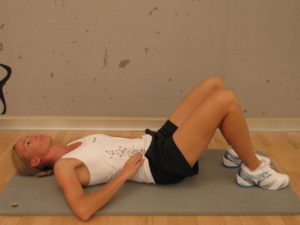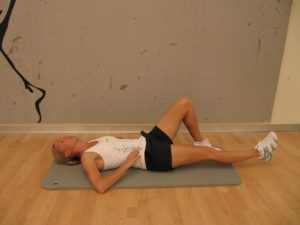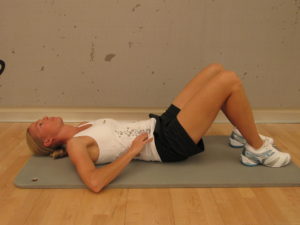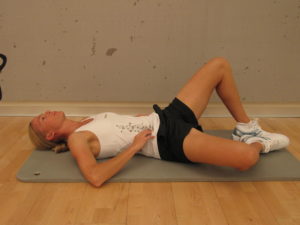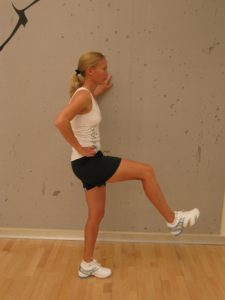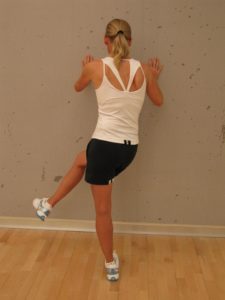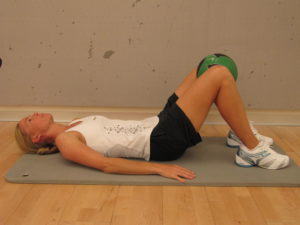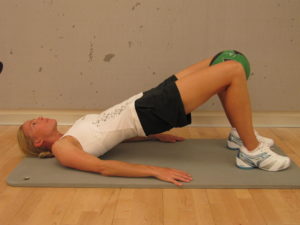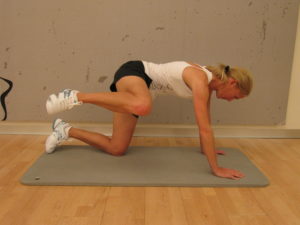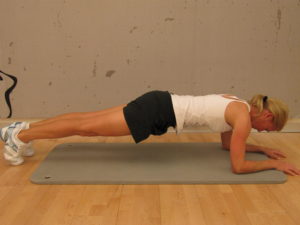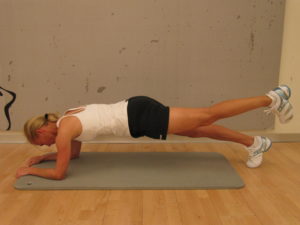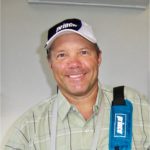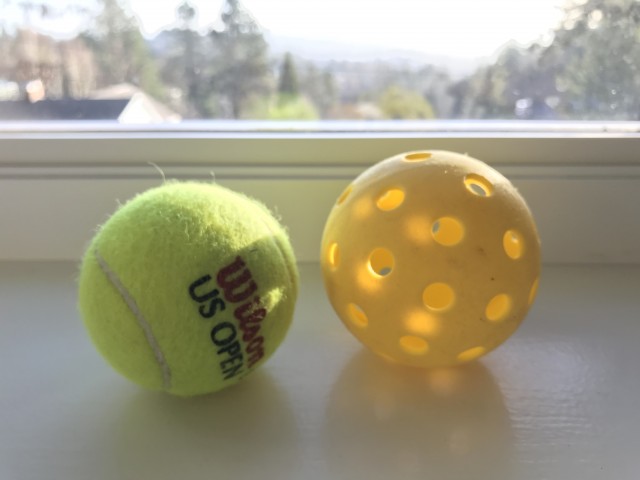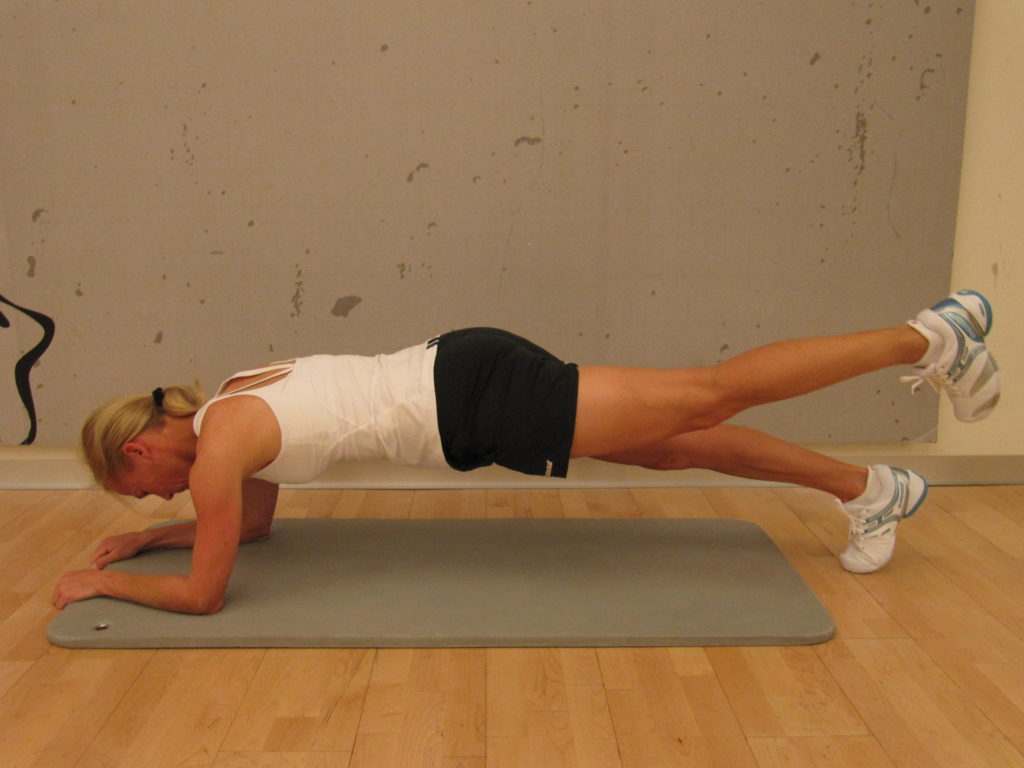
By Carl Petersen, BPE, BSc(PT), City Sports Physiotherapy Clinic
The core (trunk) muscles form the stable base of support for the body arms and legs to move from. The core consists of four main muscles: ‘the inner unit’ (Richardson et al, 1999) – the transversus abdominus (TA) (lower abdominals), multifidus (deep, small muscle of the back), the pelvic floor muscles and the diaphragm. These muscles work together to support the back and pelvis as the upper and lower extremities move during tennis movement. The trunk muscles help transfer energy from the legs through the core (trunk) to the upper body and arms. The abdominal musculature plays a significant role in trunk and core stability providing a mechanical link between the lower and upper limbs (Maquirriiain et al, 2007). This is especially important in tennis as the rotation and separation between upper and lower core is needed to stabilize the different strokes.
Begin with Base Work (adapted after Richardson et al, 1999)
Start by lying on your back with knees bent up to approximately 90 degrees. You should feel a light tension in your lower abdominal and pelvic floor muscles. When activated and recruited properly the stability of the upper and lower core forms the foundation for other movements and all sports including tennis.
Leg Slide Exercise Tips:
– Start lying on your back with both knees bent up
– Switch on your core muscles
– Slowly slide one heel out until leg straight & then back up again to the start position
– Do 1-2 sets of 10 on each side
Leg Fall Out Exercise Tips:
– Start lying on your back with knees bent up
– Switch on your core muscles
– Slowly let one leg fall out to the side & then back up again to start position
– Do 1-2 sets of 10 on each side
Now that you are able to ‘Switch on the Core ‘ with leg movements, it is time to connect the core with some dynamic leg swings. These are good exercises as well for challenging balance and strengthening the lower core and legs
Leg Swings Exercise Tips:
– Stand tall with soft knee (slightly bent) on stance leg
– Switch on your core muscles & do leg swings front & back, side to side & figure of 8 pattern
– Do 1-2 sets of 10 on each side
Now that you are warmed up it is time to move along to some bridging exercises using resistance bands and balls. The following exercises are designed to help to develop the core and to strengthen specific larger muscles in a dynamic and functional way. They have been chosen because they are functional in nature and reflect the current research on how our muscles and fascial tissue link together to form sling systems connecting the upper and lower core.
Bridging Exercises
Supine Bridging & Ball Squeeze Exercise Tips:
– Start lying on your back with both knees bent up & a ball between knees
– Switch on your core & raise hips off the mat lightly squeezing the ball
– Hold for 4 seconds & lower back down to start position
– Do 1-2 sets of 10
– This exercise can also be done putting a stretch band around knees and pulling apart
Quadruped Bridge & Knee Circles Exercise Tips:
– Start kneeling on all fours & find your neutral position with back flat
– Switch on your core muscles
– Now raise one leg off the ground & do slow circles with your knee
Prone Bridge & Single Leg Raise Training Tips:
– Start in a prone bridge position on forearms & toes
– Switch on your core muscles
– Now raise up one leg & hold
Rules of Core Strength
* Always start with ‘Switching on Your Core’ routine to reeducate the lower abdominals to work in a pre-anticipatory way. This is especially important after a lay off, after an injury, or when you have been mal-aligned or have low back or hip pain and stiffness.
* Approach traditional sit-ups with caution, as the elbow-knee movement places a lot of strain on the low back.
* Core exercises should be done at the end of strength work outs, or after other dryland training so that they can adequately function as stabilizers during the exercise.
Carl Petersen is a partner/physiotherapist at City Sports Physiotherapy Clinic in Vancouver. He is an internationally recognized speaker and has co-authored the book Fit to Play™ Tennis as well as a variety of other training resources with former WTA professional and current coach and exercise model Nina Nittinger based in Davos Switzerland.
References
1) Richardson, C.A., Jull G.A., Hodges, P.W.,Hides, J. Therapeutic Exercise for Spinal Segmental Stabilisation in low back pain. Edinburgh: Churchill-Livingstone. 1999.
2) Maquirriiain J, Ghisi JP, Kokalj, AM. Rectus abdominus muscle strains in tennis players. Br. J Sports Med 2007: 41:842-848.
